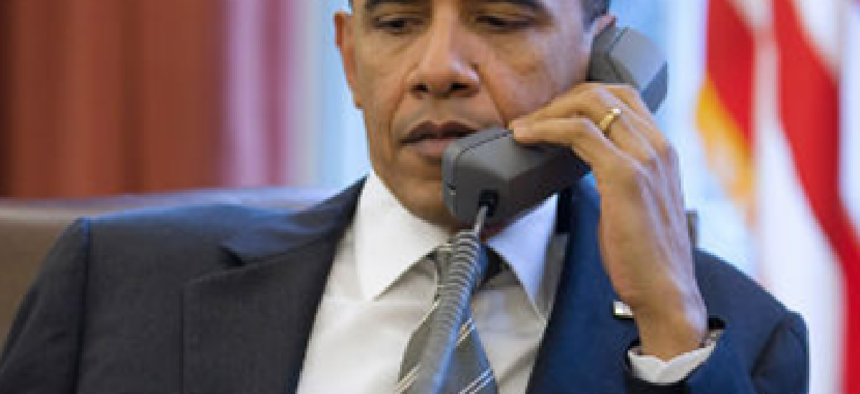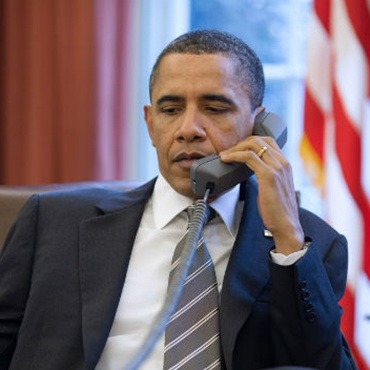Cyber EO successes and struggles

Deadlines for the first two sets of deliverables under Obama's cybersecurity executive order have come and gone, meaning agencies are now ready to ask: Can the government actually get this done?

It has been less than six months since President Obama's cybersecurity executive order. (File photo)
It has been less than six months since President Obama issued an executive order targeting cybersecurity in U.S. critical infrastructure, a mandate that has pushed federal agencies and privately owned utilities into security overdrive. The first and second sets of deliverables, now in after respective June and July deadlines, mean agencies are now at the point to reasonably ask: Can the government actually get this done?
The cyber EO and its push to secure critical infrastructure – power companies, water utilities and the like – demand an unusual level of cooperation between the government and industry. The first deliverables, due 120 days after the EO's release, center on information-sharing, figuring out incentives and expanding existing critical infrastructure protections. The 150-day deliverables take matters a step further by zeroing in on the parts of critical infrastructure most vulnerable to catastrophic incidents, and evaluating and improving the truly crucial public-private partnerships.
With the second set of deliverables submitted on July 12, officials say the intense work in both sectors has highlighted all the pieces that are coming together – and the parts of the puzzle that still need more work. At the crux of it all is a tension between missions, requirements and approaches.
"Looking at [how] over the last 10 years we've been building this partnership – what's worked, what hasn't -- overall we've found that the structure has worked well," said Jeanette Manfra, deputy director of the Homeland Security Department's cyber EO integrated task force. "We need to do a better job in the areas of flexibility; you can't treat all the sectors the same, or even a sector itself as all the same. So it's flexibility, and it's also the ability to balance the empowerment and accountability pieces that need to be in there."
In addition to public-private partnerships and effective information-sharing between them, key areas of focus include the establishment of incentives for participation, the integration of cybersecurity into government acquisition processes and the development of overarching framework. Officials speaking July 17 on a panel at Wiley Rein in Washington, including Manfra, said the progress is real but much work remains -- especially as the deadline approaches for the next sets of deliverables, due in October and February.
"What we're talking about now is preliminary framework; this is what's due in October," said Adam Sedgewick, senior IT policy adviser at the National Institute of Standards and Technology. "But we also expect that this engagement will be ongoing, and questions about the long-term governance of this framework are going to be important."
The framework centers on certain central themes: flexibility for future solutions; collaboration with industry; and protections for intellectual property and privacy and civil liberties. The framework also requires that the government does not introduce new standards when existing ones meet the objectives, and it needs to be compatible with existing regulations, Sedgewick added.
Among the existing regulations are those related to acquisition, an already-complex area into which officials now must incorporate cybersecurity. It is an issue throughout agencies, regardless of mission, and one in which NIST analyses have identified specific shortfalls. The EO and framework are targeting these acquisition gaps, said Emile Monette, senior action officer for cybersecurity policy at the General Services Administration.
"If you've been tracking the framework development, you get that [cyber] is a dependency that cuts across all of the sectors. This is increased accountability – it's providing some structure and discipline and hard-stop process pieces in the acquisition system that requires a cybersecurity check," Monette said. "You don't see many contracting officers or even corporate procurement people signing contracts without a legal sufficiency review...and we analogize that to cybersecurity and information-security review and insert it in the acquisition system."
According to Manfra, acquisition is not the only matter where business as usual is hamstringing efforts. Classification of information and cumbersome clearance processes to access it for critical decision-making are areas also in need of overhaul. DHS has been working on those issues in coordination with the Justice Department and the Office of the Director of National Intelligence, Manfra noted.
"How it’s affected the partnerships is similar to other process breakdowns in that it's often perceived as a trust problem or a lack of competence problem...it’s emblematic of trying to get our arms around the different things that we need to do that are very unique in government," she said. "At the same time we're saying, 'this is a partnership,' we have these things hampering us."
The ongoing processes in implementing the cyber EO have highlighted these bumps in the road, but officials remained optimistic. The range of organizations, opinions and needs that now have a seat at the table magnify the intricacy of the mission at hand – a spotlight that is driving progress, according to those involved in the discussions.
"Everyone is coming to the table recognizing that...if we're going to be a true public-private partnership we have to both appreciate the complexity of it and be OK with that complexity," Manfra said. "We have to work together and be open in a way that the government is not always used to. This is a big cultural change but...if we don’t build that trust and build those relationships it's not going to work."


